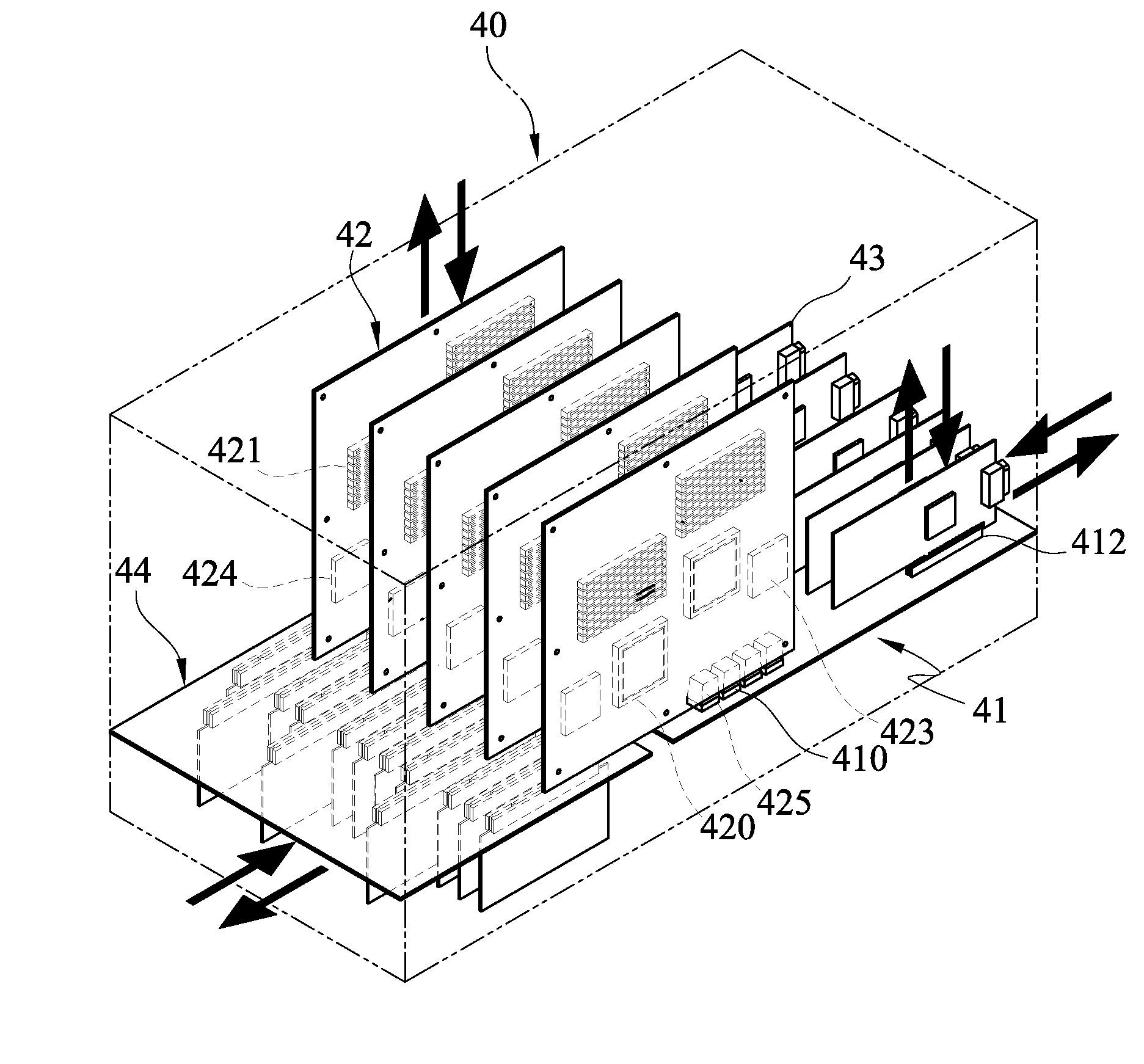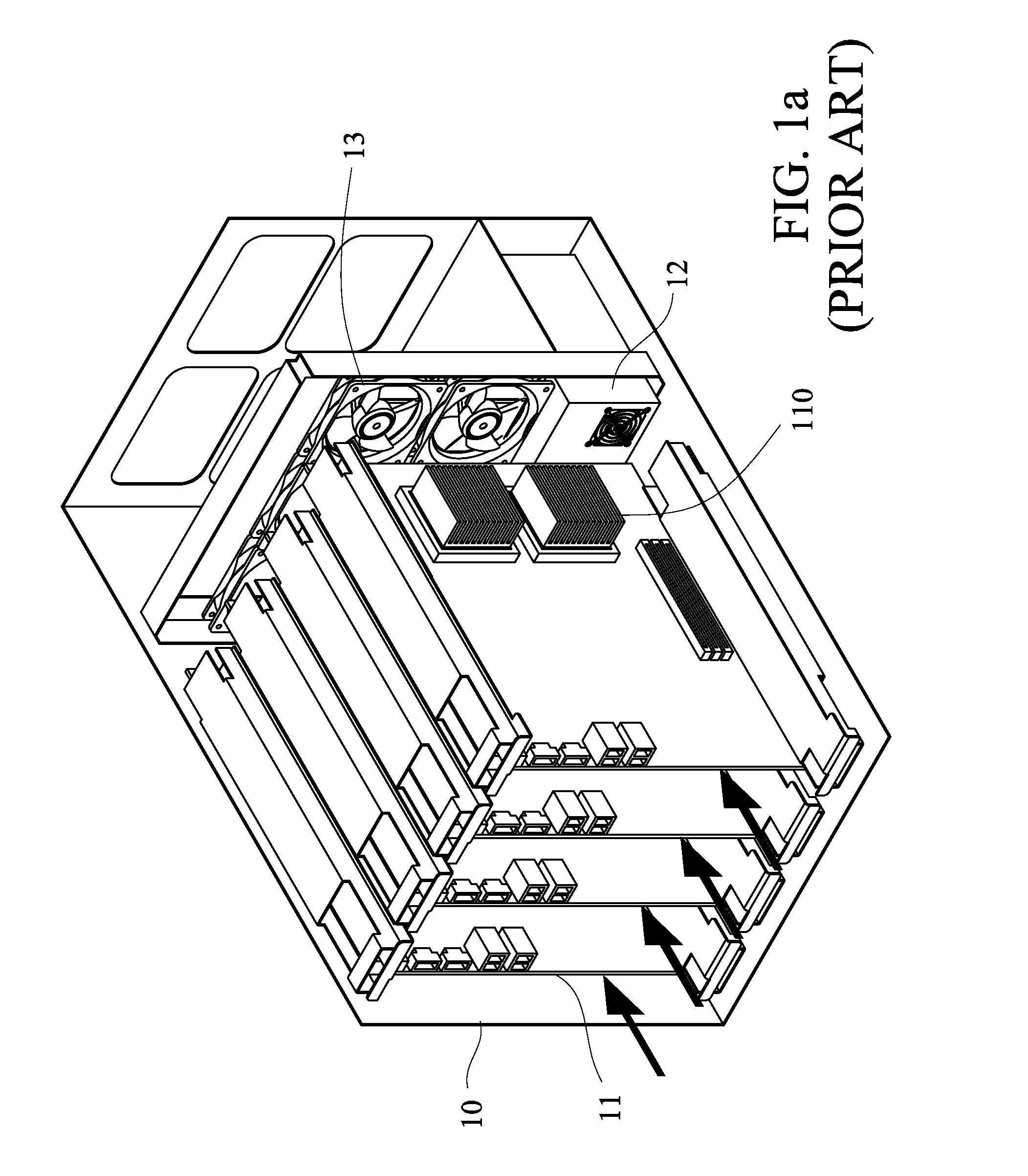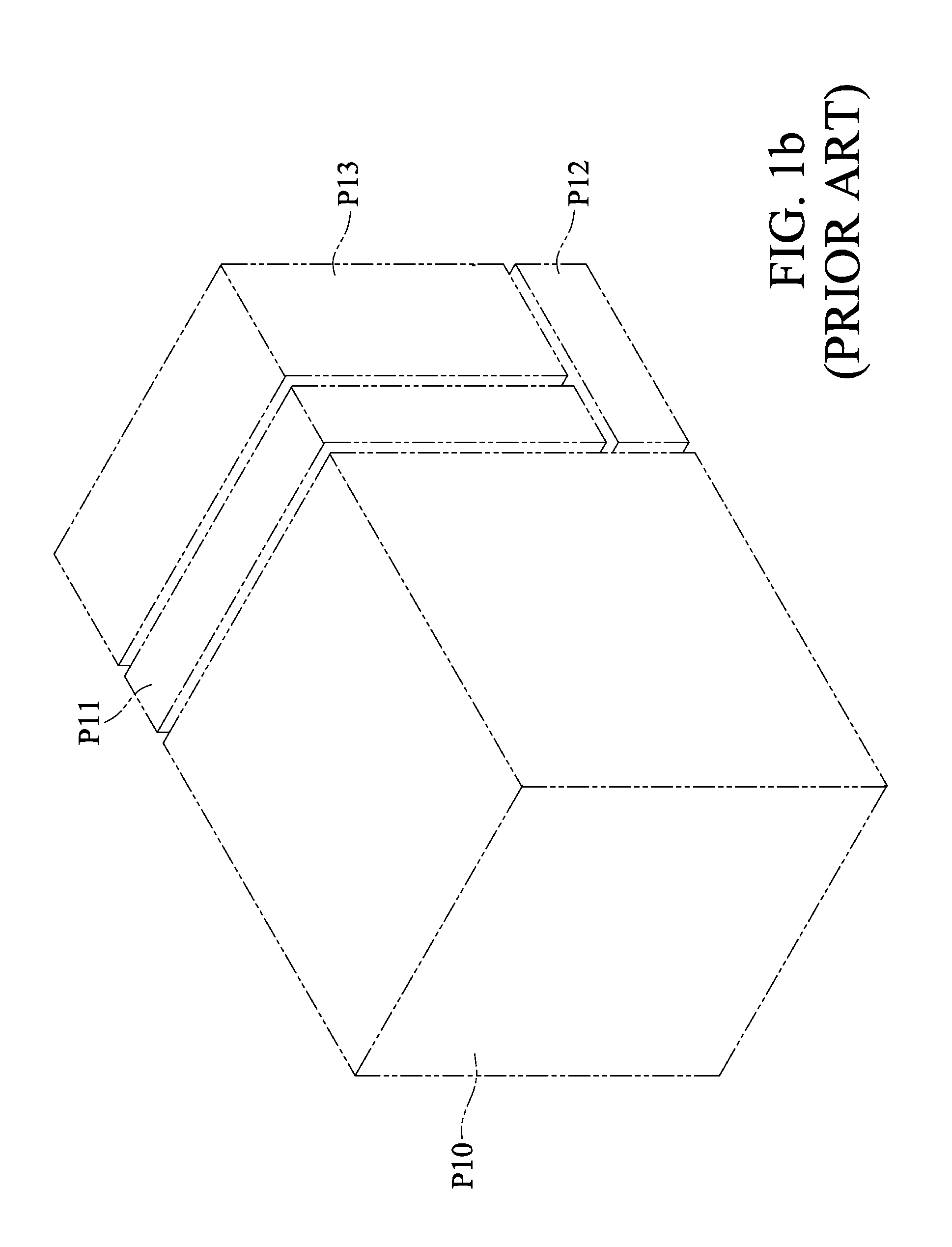Chassis partition architecture for multi-processor system
a multi-processor system and partition architecture technology, applied in the direction of electrical apparatus construction details, instruments, casings/cabinets/drawers, etc., can solve the problems of increasing the complexity of the system design, enclosures require a complex and expensive internal chassis, and the space arrangement of the chassis is always a significant issu
- Summary
- Abstract
- Description
- Claims
- Application Information
AI Technical Summary
Benefits of technology
Problems solved by technology
Method used
Image
Examples
Embodiment Construction
[0030]To achieve outstanding serviceability, configurability and cooling performance of a multi-processor system, a partition-oriented chassis design according to the present invention is provided under some hardware limitations.
[0031]Please refer to FIGS. 4a and 4b. A partition architecture of a chassis 40 according to an embodiment of the present invention mainly includes a node partition P411, a expansion partition 412 and a function partition 421. Such partition architecture is designed dedicatedly for a multi-processor system with plural boards and numerous cards shown in FIG. 4b. The term “partition” herein is defined as an internal space of the chassis with no limitations to the mechanical construction.
[0032]The multi-processor system mainly includes a chassis 40, a bottom plane 41, plural processor boards 42, plural expansion cards 43, a function board 44 and plural function cards 45 and 46.
[0033]Basically, the node partition P411 is located at a middle section of the chassi...
PUM
 Login to View More
Login to View More Abstract
Description
Claims
Application Information
 Login to View More
Login to View More - R&D
- Intellectual Property
- Life Sciences
- Materials
- Tech Scout
- Unparalleled Data Quality
- Higher Quality Content
- 60% Fewer Hallucinations
Browse by: Latest US Patents, China's latest patents, Technical Efficacy Thesaurus, Application Domain, Technology Topic, Popular Technical Reports.
© 2025 PatSnap. All rights reserved.Legal|Privacy policy|Modern Slavery Act Transparency Statement|Sitemap|About US| Contact US: help@patsnap.com



